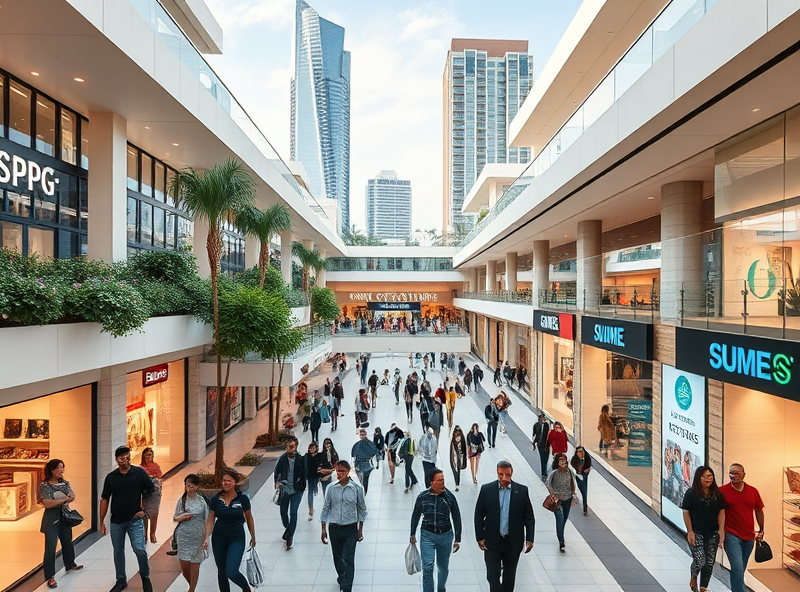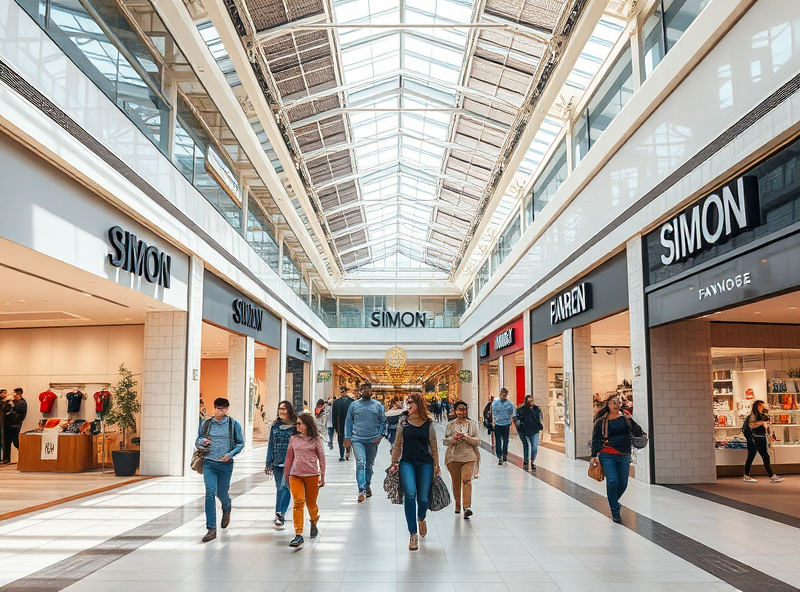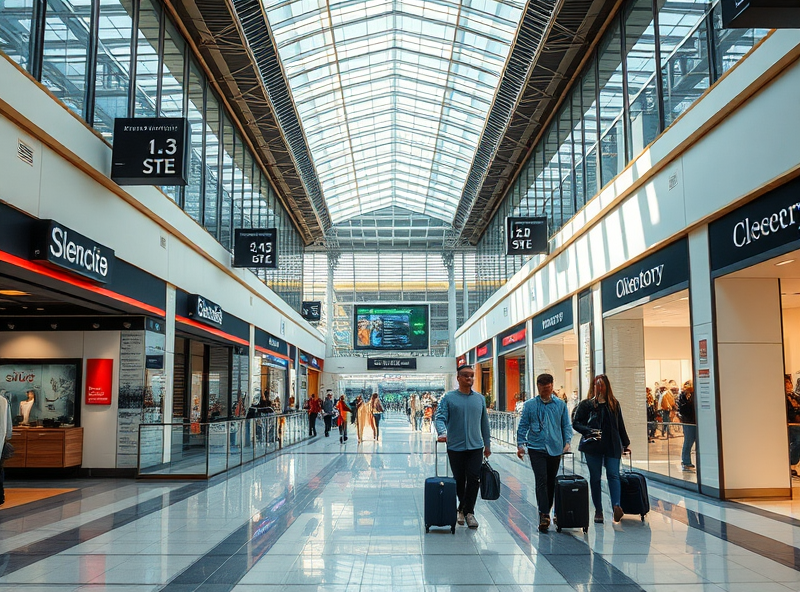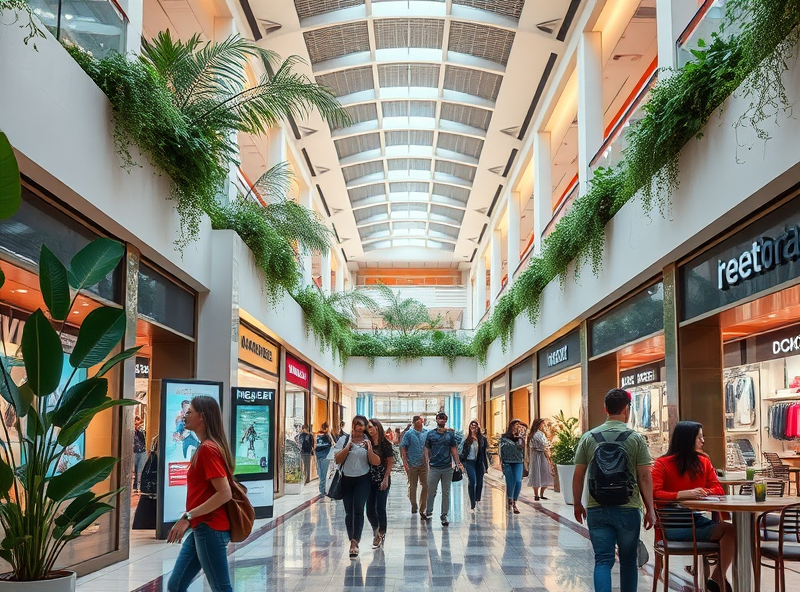
Simon Property Group: Are Malls Really Dead?
Strong Financials and Global Expansion Drive SPG’s Strategy

Simon Property Group (SPG), the largest mall operator in the U.S., continues to defy the ‘retail apocalypse’ narrative through a robust financial foundation and a strategic global outlook. While many have questioned the future of malls, SPG is proving that innovation, diversification, and smart capital allocation can redefine the traditional retail experience.
At the core of SPG’s resilience is its strong balance sheet. As of its latest earnings report, SPG boasts over $8 billion in liquidity and maintains an investment-grade credit rating. This financial strength allows the company to reinvest in its properties, enhance tenant mix, and weather economic downturns more effectively than its peers. In fact, SPG’s consistent dividend payouts and stock buybacks reflect management’s confidence in long-term growth.
Another key pillar of SPG’s strategy is its global expansion. The company has made strategic investments in international markets, including premium outlets in Asia and Europe. These ventures not only diversify revenue streams but also position SPG to capitalize on emerging market growth and global consumer trends. For example, their joint venture with Authentic Brands Group to acquire and revitalize legacy retail brands like Forever 21 and Brooks Brothers demonstrates how SPG is integrating retail operations with real estate to create a more sustainable ecosystem.
Moreover, SPG is actively transforming its properties into mixed-use destinations. By incorporating residential units, hotels, entertainment venues, and co-working spaces, SPG is turning malls into lifestyle hubs that attract both tenants and consumers. This adaptive reuse strategy is a smart response to changing consumer behavior and the rise of e-commerce.
In short, SPG’s strong financials and global strategy offer a compelling case that malls are not dead—they’re evolving. For investors and industry watchers, SPG provides a blueprint for how retail real estate can thrive in the 21st century.
For more on SPG’s financials and strategic direction, you can visit their official investor relations page: https://investors.simon.com/
Occupancy Rates and Leasing Trends Tell a Growth Story

While the retail landscape has undeniably shifted over the past decade, the idea that malls are ‘dead’ is far from accurate—especially when looking at the performance of Simon Property Group (SPG), the largest mall operator in the U.S. One of the most telling indicators of SPG’s resilience and growth is its strong occupancy rates and evolving leasing trends.
As of the latest quarterly report, SPG’s occupancy rate stands at an impressive 94.4%, reflecting a steady recovery from pandemic lows and signaling strong tenant demand. This figure is not just a number—it represents a vote of confidence from retailers who see value in physical locations, particularly in high-traffic, Class A malls that SPG specializes in.
Leasing trends further support this growth narrative. SPG has successfully signed over 3,000 new and renewal leases in the past year, with an average base rent increase of 3.4%. This is a key metric that shows not only are retailers staying, but they’re also willing to pay more for prime space. Moreover, the company is attracting a diverse mix of tenants, including digitally native brands like Warby Parker and Allbirds, who are now embracing brick-and-mortar to enhance customer experience.
Another important trend is the shift toward experiential retail—think fitness centers, entertainment venues, and upscale dining—which now make up a growing portion of SPG’s tenant mix. These experiences can’t be replicated online and are drawing foot traffic back to malls, creating a more dynamic and sustainable ecosystem.
For investors and retail watchers alike, these trends offer valuable insight: malls, particularly those operated by forward-thinking companies like SPG, are evolving—not dying. Their ability to adapt to new consumer behaviors, attract a diversified tenant base, and maintain high occupancy rates suggests a robust future.
For more detailed financial data, you can refer to SPG’s official investor relations page: https://investors.simon.com
Facing Challenges: Trade Tariffs, Tourism, and Retail Risks

Simon Property Group (SPG), one of the largest mall operators in the U.S., is navigating a complex landscape shaped by global trade tensions, shifting tourism patterns, and evolving retail risks. While the question ‘Are malls really dead?’ continues to circulate, the reality is more nuanced. SPG is adapting, but not without facing significant headwinds.
Trade tariffs, particularly those involving China and other major manufacturing hubs, have increased the cost of goods for many retailers. This affects tenants in SPG’s malls, especially those reliant on imported merchandise. Higher prices can lead to reduced consumer spending, which in turn impacts rental income and occupancy rates for mall operators.
Tourism, another key driver of foot traffic in premium shopping centers, has been volatile in recent years. Global events such as the COVID-19 pandemic and geopolitical tensions have disrupted international travel. For malls located in tourist-heavy regions, this has meant fewer visitors and a shift in marketing strategies to attract more local shoppers.
Retail risks are also evolving. The rise of e-commerce has permanently changed consumer behavior. While SPG has invested in experiential retail and mixed-use developments to counteract this trend, not all properties are equally resilient. The company has had to strategically close or repurpose underperforming assets while focusing on high-performing locations.
Despite these challenges, SPG remains financially robust, with a strong balance sheet and strategic partnerships. The company is also exploring digital integrations and diversifying its tenant mix to include entertainment, dining, and even healthcare services—areas less vulnerable to online disruption.
For those watching the retail and real estate sectors, SPG’s journey offers valuable insights into how legacy businesses can adapt to modern pressures. Their approach underscores the importance of flexibility, innovation, and understanding macroeconomic forces.
For more insights on the impact of trade tariffs on retail, the U.S. International Trade Commission provides detailed reports: https://www.usitc.gov/
Why Class A Malls and Gen Z Are Reviving the Mall Era

For years, the narrative around malls has been one of decline—shuttered storefronts, dwindling foot traffic, and the rise of e-commerce. But a closer look reveals a different story, especially when it comes to Class A malls and their surprising resurgence, thanks in large part to Gen Z.
Class A malls, which are defined by high sales per square foot, prime locations, and a curated mix of luxury and experiential retail, are thriving. Simon Property Group (SPG), the largest mall operator in the U.S., has leaned into this trend by investing heavily in premium properties and integrating lifestyle elements like entertainment, dining, and wellness into their spaces. These malls are no longer just shopping centers—they’re becoming social hubs.
What’s driving this revival? Gen Z, the digitally native generation, is seeking more than just online convenience. They crave experiences, community, and authenticity. Malls offer a tactile, immersive environment where they can hang out with friends, try on clothes, and discover new brands in real life. According to a 2023 report by JLL, Gen Z visits malls more frequently than Millennials did at the same age, and they’re influencing retail trends through social media and pop-up culture.
Simon Property Group has responded by hosting influencer events, integrating digital-first brands into physical spaces, and creating Instagram-worthy installations that resonate with younger audiences. The result? Increased foot traffic, higher tenant sales, and a renewed sense of relevance for malls in the digital age.
This trend shows that malls aren’t dead—they’re evolving. And with the right strategy, they can become vibrant community spaces that blend retail, entertainment, and social connection in ways that online shopping simply can’t replicate.
For more insights, you can explore JLL’s official report on Gen Z and retail trends: https://www.us.jll.com/en/trends-and-insights/research/gen-z-and-the-future-of-retail







